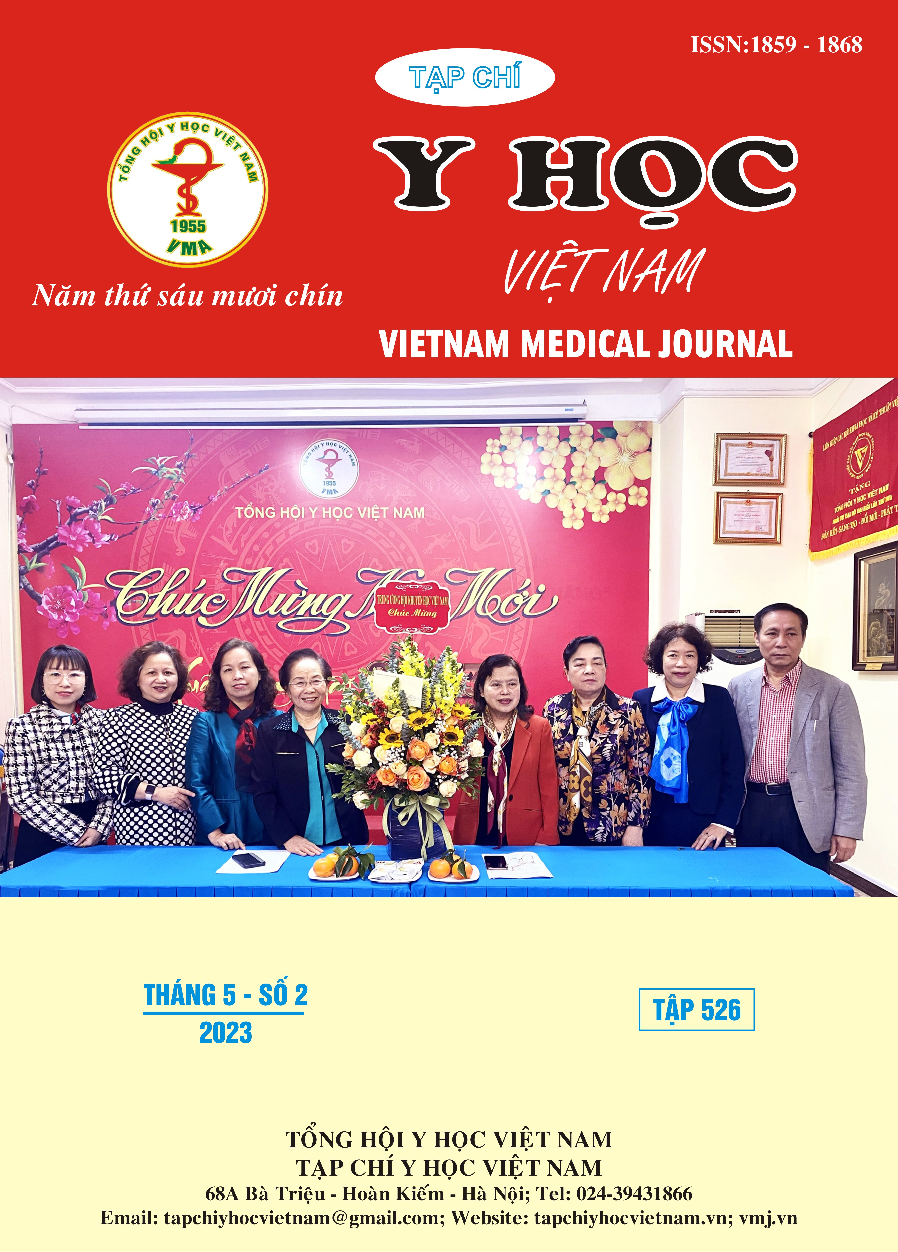RESEARCH ON THE APPLICATION OF ARTIFICIAL INTELLIGENCE IN PRENATAL SCREENING FOR THALASSEMIA
Main Article Content
Abstract
Objective: Evaluate the test results of the artificial intelligence software system designed to support thalassemia antenatal screening at the National Hospital of Obstetrics and Gynecology and the Hanoi Obstetrics and Gynecology Hospital. Subjects and methods: 244 medical records including history of thalassemia, laboratory results including Complete blood count (at least 4 indices of HGB, MCV, MCH, RDW); serum iron, ferritin; Hb electrophoresis results (if any) of pregnant couples visiting the National Hospital of Obstetrics and Gynecology and Hanoi Hospital of Obstetrics and Gynecology, analyzed by an artificial intelligence software system (machine learning software and expert knowledge system software). Results were compared with the results of genetic testing for thalassemia using Stripassay method. Results: The artificial intelligence software system in antenatal thalassemia screening achieved high accuracy, with a sensitivity over 95% and specificity ranging from 94.29% to 100%. Conclusion: The AI software system for prenatal screening of thalassemia is a useful and highly effective tool in predicting the risk of carrying the disease gene of pregnant couples. It is expected to become an important supporting tool to help clinicians in thalassemia screening in the future.
Article Details
Keywords
Thalassemia, prenatal screening, artificial intelligence, machine learning software, expert knowledge system software
References
2. Amendolia SR, Cossu G, Ganadu ML, Golosio B, Masala GL, Mura GM. A comparative study of K-Nearest Neighbour, Support Vector Machine and Multi-Layer Perceptron for Thalassemia screening. Chemometrics and Intelligent Laboratory Systems. 2003/11/28/ 2003;69(1):13-20. doi:https://doi.org/10.1016/S0169-7439(03)00094-7
3. Egejuru N, Olusanya O, Asinobi A, Omotayo Joseph A, Adebayo V, Idowu P. Using Data Mining Algorithms for Thalassemia Risk Prediction. Journal of Biomedical Science and Engineering. 09/06 2019;7:33-44. doi:10.11648/ j.ijbse. 20190702.12
3. Fu YK, Liu HM, Lee LH, et al. The TVGH-NYCU Thal-Classifier: Development of a Machine-Learning Classifier for Differentiating Thalassemia and Non-Thalassemia Patients. Diagnostics (Basel, Switzerland). Sep 20 2021; 11(9)doi:10.3390/ diagnostics11091725


